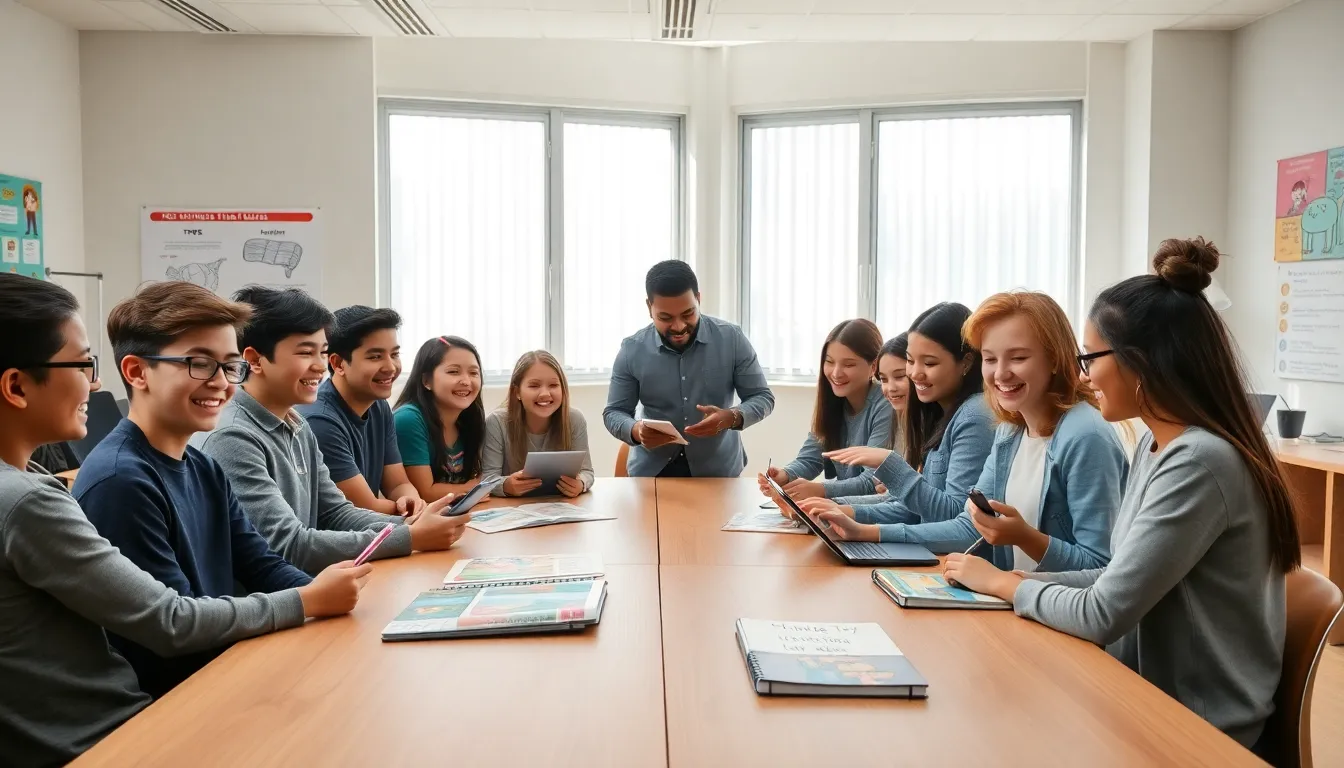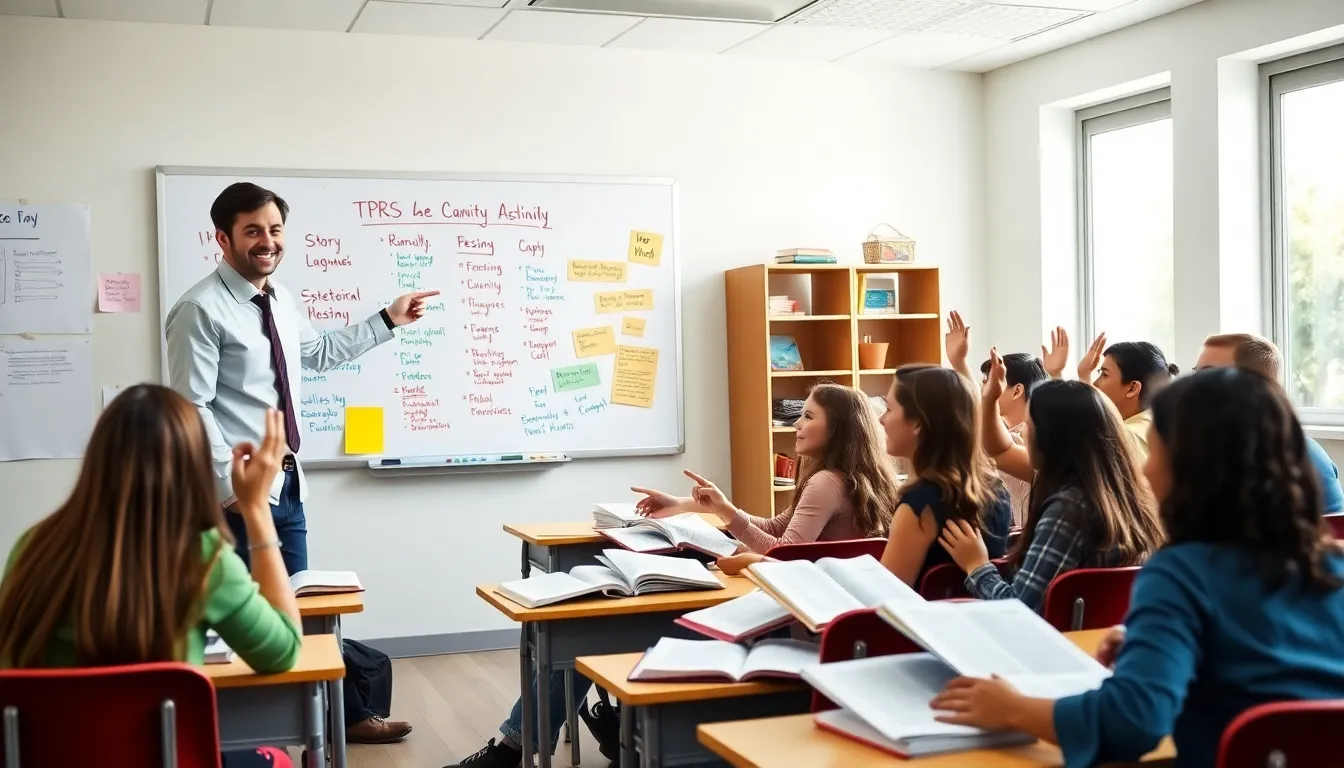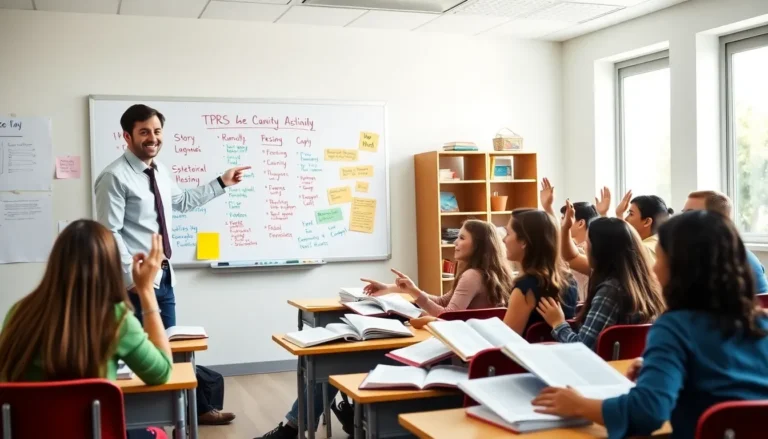Table of Contents
ToggleImagine walking into a classroom where students aren’t just sitting quietly, listening to a teacher drone on and on. Instead, they’re actively engaging in stories, inventing characters, and laughing as they learn. Welcome to the world of TPRS language learning. This method isn’t just a flash in the pan: it’s a dynamic approach to language acquisition that’s as captivating as a roller coaster ride, minus the nausea. In this text, we’ll explore what TPRS is, how it works, and why it could be the game changer every language teacher has been waiting for.
What Is TPRS?

TPRS stands for Teaching Proficiency through Reading and Storytelling. Created by Blaine Ray, it taps into storytelling as a primary avenue for language learning, engaging learners in a way that feels natural and enjoyable. Rather than memorizing vocabulary lists or slogging through grammar drills, students become part of a narrative that encourages them to hear, use, and understand the language in context. Think of it as the English version of being a kid again, where stories reign supreme and playfully guide learners through their journey.
At its core, TPRS is all about the fun and the narrative, leaving those dry textbooks gathering dust on the shelf. The goal here is to have students personally involved in the learning process, ensuring that language acquisition happens as an organic, immersive experience.
The Principles Behind TPRS
TPRS is built upon several key principles that make it stand out in the crowded field of language instruction.
- Comprehensible Input: This principle suggests that learners acquire language best when the input they receive is slightly above their current level of proficiency. It’s like giving just enough challenge to keep students on their toes without overwhelming them.
- Storytelling: Central to TPRS is the art of storytelling. Instead of relying solely on vocabulary drills, teachers integrate narratives that capture students’ imaginations and emotions. Who wouldn’t want to hear a story that includes them as a character?
- Personalization: A hallmark of TPRS is its focus on student engagement through personalization. By weaving individual interests and experiences into the stories, learners feel more connected and invested in the content. The classroom becomes a canvas of diverse interests and backgrounds.
- Repetition: Repetition is essential in language learning. TPRS employs this by recycling vocabulary and structures within the stories, reinforcing learning without making it feel redundant.
How TPRS Works in the Classroom
Implementing TPRS in the classroom turns every lesson into a riveting adventure. Here’s how it typically unfolds:
- Establishing Context: A TPRS lesson starts by introducing vocabulary and structures in a fun and engaging way, often through visuals or actions. This creates a familiar context for students and cushions them as they jump into the story.
- Creating the Story: Teachers involve students in the story creation process. By asking questions and letting learners contribute ideas, the story evolves into something personal and exciting.
- Circling: This technique involves repeating key vocabulary in various contexts, infusing understanding while ensuring students can recall and use new words confidently. This keeps engagement levels up and makes the language feel accessible.
- Reading and Comprehension Checks: Once the story is crafted, students engage in reading activities that reinforce comprehension. These can include illustrations, retellings, or even acting out scenes, all while reinforcing the language naturally.
Benefits of TPRS Language Learning
The advantages of using TPRS are numerous, making it an attractive option for educators.
- High Engagement: Students are often more engaged when stories are involved. Learning becomes interactive, and who can resist a good tale?
- Improved Retention: By contextualizing vocabulary in stories, retention rates improve. When learners can visualize and relate to the language, it sticks.
- Lower Anxiety Levels: Traditional language learning can evoke anxiety, especially during speaking activities. TPRS fosters a supportive environment, where students can practice without the fear of making mistakes in front of peers.
- Building Community: TPRS naturally encourages collaboration among students. They work together to build stories, share ideas, and support one another in the learning process. In essence, it transforms a classroom into a vibrant community.
Challenges and Considerations in TPRS Implementation
While TPRS offers various benefits, it’s essential to acknowledge the challenges that educators may face.
- Teacher Training: Not all teachers are familiar with TPRS techniques. Professional development and training are crucial to equip educators with the necessary skills and confidence. But, this can be a time and resource-intensive process.
- Classroom Management: Engaging storytelling can lead to off-topic conversations. Teachers must skillfully balance classroom dynamics to maintain focus while fostering engagement.
- Curriculum Integration: Some curricula may not align seamlessly with TPRS methods. Teachers might find it tough to integrate this approach into established teaching frameworks.
Real-World Examples of TPRS Success
Across the globe, numerous educators have successfully implemented TPRS in their classrooms, sharing their experiences and outcomes.
- A high school Spanish teacher in California introduced TPRS to her students and reported a significant boost in their confidence levels. They now actively participate in class discussions and even approach her for additional challenges.
- An elementary French teacher in Canada utilized TPRS to teach her students about everyday activities, leading to improved conversational skills among her young learners. The laughter and giggles during storytelling indicated a positive atmosphere that fostered language acquisition.







